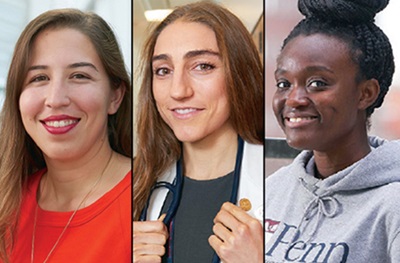
Amanda Labora, Katie McDermott, and Mariah Owusu-Agyei. Photos by Peggy Peterson.
In the fall of 2015, as the Perelman School of Medicine celebrated its 250th year, Penn Medicine magazine profiled nine entering medical students who each had an interesting path to medical school — including a financial analyst, a traveler to the Middle East, and a college varsity soccer captain who counseled patients at Planned Parenthood, among a group that also included a cellist, a wilderness first responder, and more. As these diverse paths took these accomplished young adults to a shared destination — medical school — they were, of course, embarking on a whole new journey together to become doctors. We checked in with a few of these students recently as they approached the halfway point of their four years in medical school. (Ultimately, some may take a longer path, depending on pursuit of additional degrees or other ventures that extend their studies.) In this post, we share what three members of the Perelman School’s Class of 2019 told us about the experience so far, in their own words.
A Brief Re-Introduction
- Amanda Labora grew up in Miami and majored in history at Brown University. As an undergraduate, she traveled to Egypt and Syria to hone her Arabic language skills, ultimately leaving both countries when war and violence broke out. During her work as a hospital scribe back in Rhode Island, she was moved by the struggles of low-income patients experiencing hardships in the Emergency Department, and by their clinical team’s efforts to help. She entered medical school with an interest in women’s health.
- Katie McDermott, from Arizona, studied racial and socioeconomic disparities as a psychology student at Fordham University. A co-captain of the women’s varsity soccer team, she also worked as a counselor at Planned Parenthood, helping low-income women who often had no other resources for health care.
- Mariah Owusu-Agyei was born in Ghana and emigrated to the U.S. with her family when she was seven years old, settling in the Bronx in New York City. As a Penn undergraduate she branched out beyond her longstanding interest in medicine and also pursued interests in finance in the aftermath of the 2008 financial collapse. She worked as a financial analyst before completing post-baccalaureate pre-med coursework and returning to Penn.
The First-Year Medical School Experience
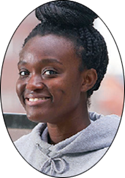 Mariah Owusu-Agyei:
Mariah Owusu-Agyei:
Year one. It's a huge learning curve. There are all these classes; at the beginning you're balancing four different classes. You don't know exactly how to study because you've never seen a lot of this material before. You don't know the most efficient way to use your time. You also just don't have enough time. I would say year one was challenging mainly because of the learning curve, but then once you get into a groove, it definitely did get better.
The Second Year: Entering Clinical Clerkship Rotations
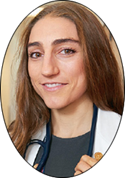 Katie McDermott:
Katie McDermott:
I expected to really enjoy my time in the hospital and I definitely have. As medical students, we may not know everything or close to everything, but our best asset is often time; we have more time to spend with patients than the attendings or residents because we are responsible for so much less and so many fewer patients. I’ve been surprised to find that even so, there are many times when I feel like I can’t spend enough time with the patients that I have. I’d really like to go and sit down for half an hour and talk to Mrs. Smith and just listen to her, and I just don’t have that 30 minutes in my day.
Even so, I’ve loved getting to know patients, and I’ve had a handful of very meaningful relationships with patients. Then also, maybe once a week during rounds I’ll be standing at the foot of a patient’s bed, and he or she will look to me while the team is talking, and I think, “Wow, this patient really trusts me as their caregiver!” And then I realize that they’re just watching the TV over my head.
And that’s okay, I’ve learned. It’s okay not to make a deep connection with every single patient. Plus, not every patient wants me to sit at their bedside and talk for 15 minutes about their disease. Some of them just want to watch TV and spend time with their visitors and interact as little with doctors as possible. Part of the skillset I’ve realized I have to acquire is the ability to provide good care, to be a good doctor, even when I’m not connecting with patients on a personal level.
Extracurricular Ventures
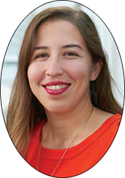 Amanda Labora:
Amanda Labora:
Since starting medical school, I have become increasingly focused on racial justice in healthcare. In particular, I have spent a lot of time thinking about the way that race is used in clinical decision-making. Inspired by the work of scholars at Penn like Dorothy Roberts and Sarah Tishkoff, my classmate Hattie Huston-Paterson and I co-founded a nonprofit called Equal Treatment. Equal Treatment is an open-access, online medical education platform that is creating high-quality, evidence-based educational resources for healthcare providers to increase awareness on issues that negatively impact the health of people of color. We have chosen to focus on three main areas: racism and genetics, migrant health, and incarcerated health. We currently have an undergraduate student intern working with us on curriculum development, and we are working on a documentary about racism and genetics that we plan to make publicly available upon completion. We decided to make a documentary to reach a wider audience and train healthcare providers to provide care that is informed by historical and present disparities.
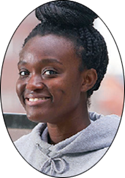 Mariah Owusu-Agyei:
Mariah Owusu-Agyei:
Last summer I got the chance to work with the global health program. I went to Ghana and did a research project there. That was amazing to finally be back because I was born there. I was working at the second-largest hospital in all of Ghana. We were doing sickle cell disease research, trying to assess stroke risk and intervene to prevent strokes in the younger kids. The project is still in the works. Right now we're still doing the paperwork for it, and hopefully before I graduate, we will be done with the project.
 Katie McDermott:
Katie McDermott:
I’ve been involved with the Correctional Health Initiative at Penn. It’s a student group whose primary aims are to advocate for health needs of currently and formerly incarcerated adults and detained kids and to help to educate medical students, especially about how incarcerated or detained persons in the U.S. and in Pennsylvania receive health care — or don’t receive health care. I didn’t know a lot about the criminal justice system before I entered med school, and I knew even less about how we provided health care in prisons and in jails. It was an interest that I stumbled into reading independently about criminal justice reform, and found that this was a pretty easy way to integrate that interest with my path now towards medicine.
One of the projects that we’ve been involved in is contributing to a prison health newsletter for people currently or previously incarcerated. Students have written short, easy to read pieces on blood pressure, hepatitis C, what do I need to know if I have this disease, what questions should I be asking my doctors, things like that.
Nonmedical Lessons Learned
 Amanda Labora:
Amanda Labora:
While I wake up every morning grateful for the opportunity to be a medical student and for the privilege of working for patients, the path through medicine is a challenging one. The demands of medical training require you to reflect on your values and determine what is most important to you because there simply isn’t time for everything. People often talk about work-life balance, but in reality it’s more like a seesaw; it is very dynamic and requires you to prioritize things differently at different times. I remember fourth year medical students telling us as first years what to expect over the next four years. They told us that we would never have more free time than we did during first year, but that our academic and clinical obligations would become much more fulfilling. I remember thinking at the time that I couldn’t possibly have less free time, but looking back, I find this to be an accurate statement. I have much less free time and much more responsibility, but I have never felt happier or more fulfilled. It’s not that things ever get easier, but as a medical student, I’ve just gotten more comfortable with being uncomfortable.
 Katie McDermott:
Katie McDermott:
Generally, medical school has been a time in which I’ve learned to be comfortable being bad at things. For example, it’s not expected that medical students come into the surgical rotations with good suturing techniques, or an understanding of the technical aspects of the field. I’ve really liked being in the OR, but I’m not great at tying knots and throwing stitches, and these skills haven’t come naturally for me. I’ve learned the importance of asking to try, asking to help close a wound, for example, even if my performance is going to be something that really does not impress a resident. The more at ease I’ve become with not excelling, the easier it is to risk being unimpressive for the chance to learn and get feedback.
 Mariah Owusu-Agyei:
Mariah Owusu-Agyei:
Medical school is very time-consuming, but, for me, once I get into the books, I love it so much. I always tell people, because I was an economics major and I did something else before coming to medical school, even though I'm now probably the most miserable I've ever been in life, I've almost never been as happy as I am now. That's the weird thing about it. It's very challenging. It takes a toll on you. It takes a lot out of you. But at the same time, I just love waking up and going to do this. I feel like I definitely made the right decision.